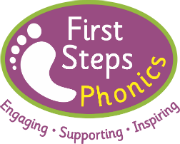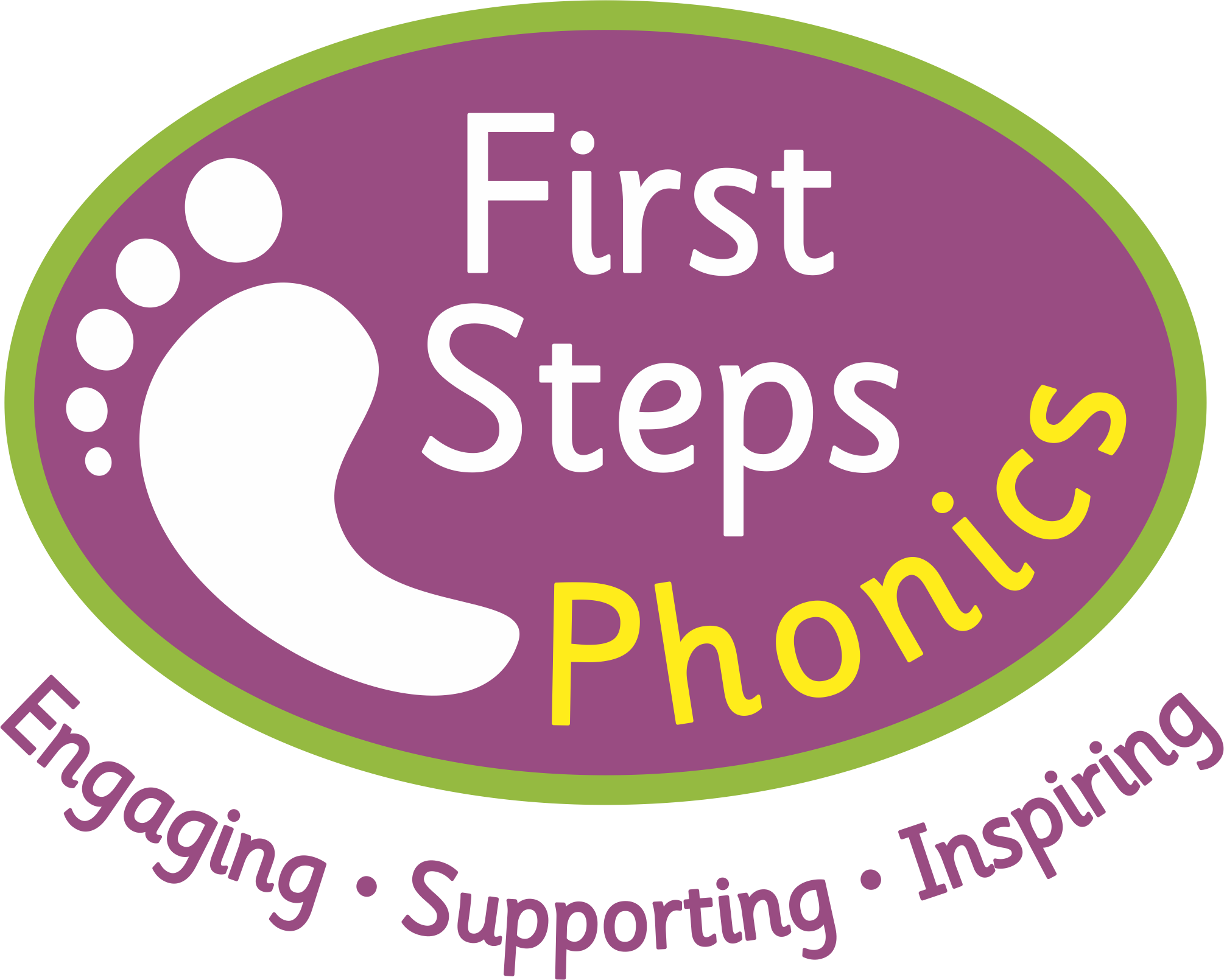The sound of the week: j
Thank you for purchasing this First Steps Phonics session for you and your child. We hope that you both really enjoy it.
We know that not all families will have access to all of the resources that we suggest. We try to make the sessions as flexible as possible by suggesting alternatives but please feel free to adapt the activities to suit your child’s needs.
We have deliberately tried to include more activities than you can probably fit into a 45 minute session so please choose the ones that are most suited to your family (or do them all if you are feeling enthusiastic!) You could also spread them out throughout the week.
Have fun and please let us know if you have any questions or feedback.
It would be helpful if you could prepare some of the following for this session:
- A bag or box containing several items that start with the sound ‘j’. Possible items are jumper, jigsaw piece, a box of jelly (activity 1)
- The song and dance ‘Jelly on a Plate’. If you don’t fancy singing yourself, find a recording of the nursery rhyme ‘jelly on a plate’. There are several animations available on the website YouTube.com (activity 2)
- A simple jigsaw puzzle that is appropriate to your child’s skill level (activity 3)
- A Jack in a box or a video clip of one (try YouTube.com) (activity 4)
- Jelly Beans or smarties, peas, blueberries, raspberries or a non-edible alternative e.g. mini pom-poms used in craft activities. Any small items will work provided that there are several of them and they can be picked up using a pincer grip (when you use your thumb and index finger to pick up an object) (activity 5)
- Tweezers (optional) (activity 5)
- A letter ‘j’ on A4 paper. You could print out the one on this page or draw one and child friendly glue or crayons or child-friendly paint or stickers (activity 6)
- A story to read your child. We suggest ‘Don’t put your finger in the Jelly, Nelly!’ in order to link our themes of fingers and jelly, but you could choose any book that you have at home that links into one of the week’s themes (activity 9)
This week’s sound is ‘j’. Watch the video below to see the action
Activity 1: Introducing the sound.
The aim of this activity is to introduce your child to the sound ‘j’. Through naming each object, children will practise listening to, and using, the sound ‘j’.
- Hand your child the bag/box containing the items beginning with the sound ‘j’.
- Let your child take each item out and examine it.
- Ask your child to name each item. If they can not name the object, say the name of the item for the child, emphasising the sound ‘j’.
- Show your child how to do the action for the letter ‘j’ and let them practise.
Activity 2: Jelly on a plate dance
Teach your child the nursery rhyme ‘Jelly on a Plate’. If you find the prospect of singing it daunting, there are several animations freely available on the website YouTube that you could sing along to.
- Jelly on a plate,
- Jelly on a plate
- Wibble, wobble, wibble, wobble,
- Jelly on a plate
Repeat the song a few times and encourage you child to dance and sing along.
The aim of this activity is to encourage your child to move their body and jump in different ways. This helps to develop their gross motor skills.
Activity 3: Jigsaw
- Present you child with the completed jigsaw puzzle
- Help them to take the jigsaw puzzle apart
- Support your child as they complete the jigsaw activity
- Try to encourage them through phrases such as… ‘try turning it around’ rather than just showing them what to do
- Try to focus on praising your child’s effort e.g. ‘well done, you are trying very hard and not giving up’
The aim of this activity is to encourage your child to maintain their attention and concentrate on a task until it is completed. This helps to build resilience .
Activity 4: Jack in a box
Show your child a Jack in a box. If you don’t have a Jack in a box toy, you could show them a clip of one from YouTube.com
Encourage you child to crouch down and then jump up at the appropriate time to complete the stated action:
- waving their hands
- nodding
- eye blinking
- feet stomping
- hand clapping
The aim of this activity is to encourage your child to listen to, and follow, instructions. The activity also develops their motor skills.
Activity 5: Jelly beans
- Scatter some jelly beans (or an alternative item) onto a tray or plate
- Give your child an empty bowl
- Encourage them to pick each ‘jelly bean’ up using a pincer grip (between their index finger and thumb) and place the item into the bowl
- If your child is older, they could try using tweezers for this activity
- With older children, you could play a game and see how quickly they can complete the task. Count to 10 whilst they do it. Can they complete the task before you reach 10?
The aim of this activity is to encourage your child to develop the pincer grip. This action is important in helping children learn how to hold a pencil and write. The optional tweezer activity also develops coordination and control.
Activity 6: The letter J
- Present your child with the A4 page containing the letter ‘j’.
- If you used pom-poms in the previous activity, show your child how to glue them inside the letter ‘j’
- If you don’t have pom-poms, you could decorate the inside of the letter ‘j’ by finger painting or colouring or using stickers
The aim of this activity is to help your child to become familiar with the letter ‘j’. They are also being creative and using their fine motor skills. With older children, you could also encourage them to include simple patterns e.g. blue, green, blue…
Activity 7: The ‘j’ game
Work through the list of instructions below and encourage your child to do the appropriate action. It is a good idea to keep repeating the instructions in different orders so that the children get used to them.
- Show me jumping
- Show me jogging
- Show me jelly wobbling
- Show me jazz hands
- Freeze!
The aim of this activity is to help your child to practise listening to, and following, instructions. They will also use their bodies t move in different ways.
Activity 8: Singing ‘fingers all’
Talk to your child about each of their fingers and what they might use them for. Practise waving each finger in turn.
Ask them to count their fingers.
Sing the nursery rhyme below using the appropriate finger to do each action.
- Tommy Thumb, Tommy Thumb where are you?
- Here I am, here I am, how do you do? (wiggle their thumb)
- Peter Pointer, Peter Pointer where are you?
- Here I am, here I am, how do you do? (wiggle pointing finger)
- Toby Tall, Toby Tall where are you?
- Here I am, here I am, how do you do? ((wiggle their middle finger)
- Ruby Ring, Ruby Ring where are you?
- Here I am, here I am, how do you do? (wiggle their ring finger)
- Baby Small, Baby Small where are you?
- Here I am, here I am, how do you do? (wiggle their little finger)
- Fingers all, fingers all where are you?
- Here I am, here I am, how do you do? (wiggle all the fingers on the last chorus)
The aim of this activity is for your child to show control and coordination over their fingers
Activity 9: Story time
Select a story to read with your child that links this week’s activities. One possibility is ‘Don’t put your finger in the Jelly, Nelly’.
Encourage your child to look at the pictures. Can they point to objects that you suggest e.g. ‘where is the jelly?’ Can they describe what they can see in the picture?
Bonus Activity: Messy Play with Jelly
Sensory play allows children to have fun whilst using their senses to explore and play.
Prepare some jelly. You could pour the jelly solution into a selection of different Tupperware containers and allow it to set. This will give you jellies of different shapes and sizes. You could make several jellies to get a range of colours
Then empty each jelly into a washing up bowl or large container and let your child play. You could try the following ideas:
- Encourage your child to feel, smell and taste the jelly
- Develop fine motor skills through using spoons and cookie cutters to break up the jelly
- Add objects to the jelly before it sets e.g. plastic numbers, plastic letters, plastic animals. Can your child dig the object out and name it?
- Ask your child to describe the look/smell/feel/taste of the jelly?

